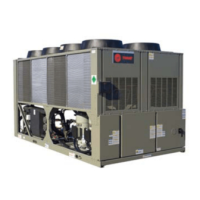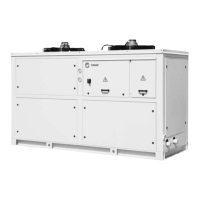140 CG-SVX17D-EN
Controls Interface
Whenever a device is installed, it must be correctly configured to communicate and to function as
intended. This process is called binding. Some features of Binding View are intended to serve a
second purpose; that is diagnosing problems with communication among the devices.
Replacing or Adding Devices
If a device is communicating but incorrectly configured, it might not be necessary to replace it. If
the problem with the device is related to communication, attempt to rebind it, and if the device
becomes correctly configured, it will then communicate properly.
If a device that needs to be replaced is still communicating, it should be unbound. Otherwise, it will
be necessary to rebuild the CH530 network image for Binding View to discover that it has been
removed. An unbound device stops communicating and allows a new device to be bound in its
place.
It is good practice to turn the power off while detaching and attaching devices to the CH530 network.
Be sure to keep power on the service tool computer. After power is restored to the CH530 network,
the reconnect function in Binding View restores communication with the network. If the service tool
computer is turned off, you must restart TechView and Binding View.
If a device is not communicating, the binding function displays a window to request manual
selection of the device to be bound. Previously-selected devices are deselected when the function
starts. When manual selection is confirmed, exactly one device must be selected; if it is the correct
type, it is bound. If the desired device cannot be selected or if multiple devices are accidentally
selected, you can close the manual selection window by clicking on No and repeat the bind
function.
Figure 92. Binding View

